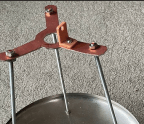Results of the 2021 CQ World Wide WPX CW Contest

Are we there yet? The age-old question of weary travelers everywhere. Where are we on the journey to the return of contest normalcy? We’ve certainly made progress. CQWW WPX CW (WPX CW) 2021 participation surpassed the record levels set in 2020. This historic growth was powered by a 46% increase in multi-operator (multi-op) entries and 56% increase in operators as compared to 2020. Further, multi-op metrics exceeded pre-pandemic levels seen in 2019. The surge in multi-op activity was not at the expense of the single operator (single-op) categories, as the number of single-op participants was nearly unchanged from last year, as shown in Table 1. More good news — a review of the WPX CW top scores clearly demonstrates the resumption of contest expeditions. Now, if Cycle 25 would just kick in.
Speaking of Cycle 25, conditions were lackluster for 2021. QSO counts were down on all bands as compared to 2020, with 10 meters seeing a 50% hit due to the lack of Sporadic-E (Es) skip. The reported QSOs total shown is Table 2 is down by 10% from 2020.
Single Operator Jetsetters
The single-op log profile for 2021 shown in Table 3 is nearly identical to that seen in 2020. Single-op, All Band, Low Power is by far the most popular category in WPX CW. It’s interesting to note that High Power entries tended to have lower score reductions, and the split between All Band and Single Band contestants was nearly identical for QRP entries.
So how many rest stops did you take during the trip? Total on-time preferences vary by power level; the average on-times were 16 hours for High Power, 12 hours for Low Power, and 11 hours for QRP.
You’re reading a preview, subscribe to read more.
Start your free 30 days



